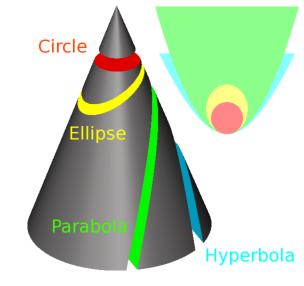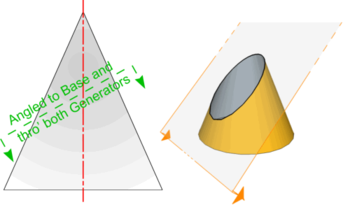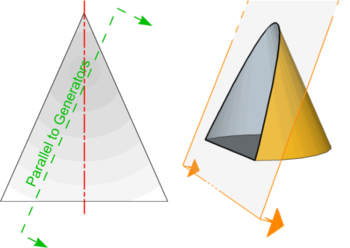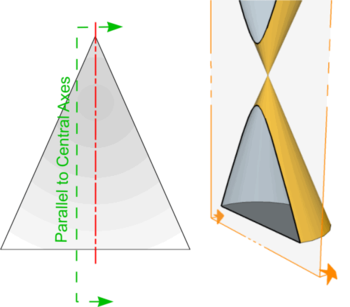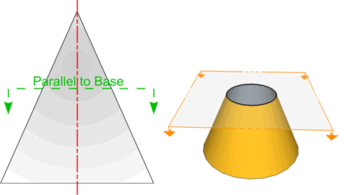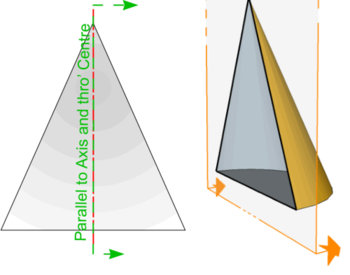Conic Sections: Difference between revisions
From DT Online
(Added note and links) |
m (Added text and links) |
||
| Line 38: | Line 38: | ||
| '''[[Triangle]]''' | | '''[[Triangle]]''' | ||
| <span style="color:#B00000"> | | <span style="color:#B00000"> | ||
* Included for completeness, triangles are created when a section is taken through the Apex and | * Included for completeness, triangles are created when a section is taken through the Apex and across the Base Cicle diameter. | ||
* Either an [https://en.wikipedia.org/wiki/Isosceles_triangle '''Isosceles'''] or [https://en.wikipedia.org/wiki/Equilateral_triangle '''Equilaterial Triangle'''] is revealed when a Right Cone is halved in this way. Other triangles would result from similar sectioning of an Oblique Cone. | |||
| [[File:Conics-TriangleTrans.png|350px|right]] | | [[File:Conics-TriangleTrans.png|350px|right]] | ||
|} | |} | ||
Revision as of 15:27, 4 April 2015
A Cone can be described as the Locus of all lines joining points on the circumference of a ‘Base Circle’ to a point, or ‘Apex’, above it. If the Apex lies perpendicularly above the centre of the base circle it is known as a ‘right cone’ and if not, it is an ‘oblique cone’.
A right circular cone is a Solid of Revolution and can be produced by rotating a right angle triangle around one of the sides opposite its hypotenuse. The hypotenuse generates the surface of a cone as it sweeps round the central ‘Axis’. Any line joining the Apex to the Base Circle is known as a ‘Generator’. Generators can continue through the Apex to produce a second cone opposite to the first, creating a ‘Double Cone,’ and each Cone could extend beyond he Base Circles to infinity.
A right circular cone can be sliced across in various ways to produce a number of Conic Sections. These are curves with particular mathematical properties and which are used in engineering design - e.g. cam profiles and arch bridge design.
| Ellipse |
|
|
| Parabola |
|
|
| Hyperbola |
|
|
| Circle |
|
|
| Triangle |
|
